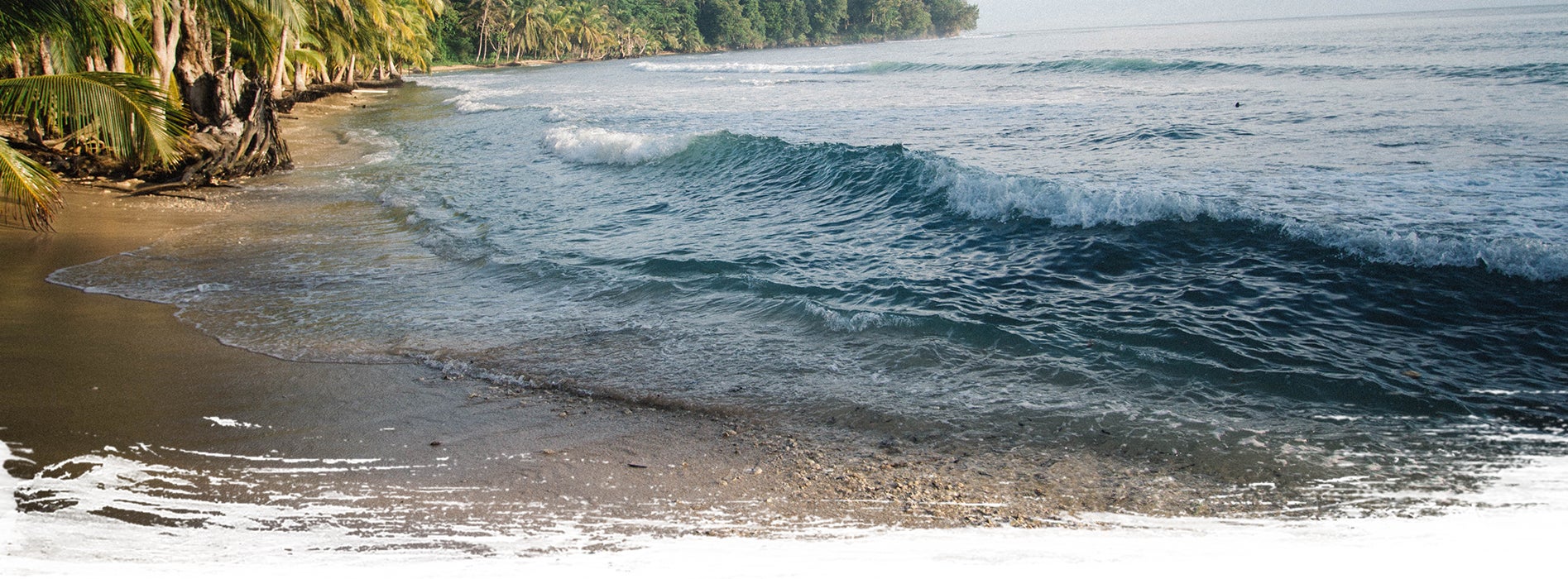AN ELEVATED EXPERIENCE
Grad students separate into teams for field experience at different altitudes
Our last day at the Cloud Forest started at the bright hour of 6:15 a.m. Now listen, we are all on summer break and we realize that this is a graduate class; however, anything before 7 a.m. between the months of June and August is still pretty darn early.
With that being said, this wakeup call did present us with the new experience of bird watching. It’s not as boring as it sounds. Whether you are a novice, moderate or expert bird watcher, the task is all the same. You look, you listen and you find — anyone can do it.
We spotted more than just flying specimens. Just to name a few, we saw an agouti (Costa Rica’s second largest rodent), multiple house wrens, the magnificent hummingbird and a coati (Costa Rica’s version of a raccoon).
And folks, this was all before breakfast. Speaking of breakfast, if consisted of french toast and the traditional gallo pinto (rice mixed with beans and a side of eggs).
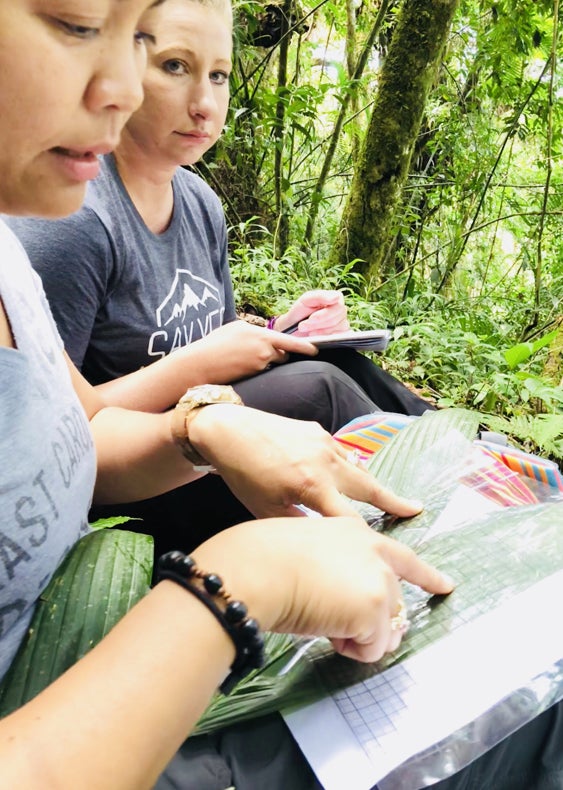
The graduate students conduct research in the field. (Contributed photos)
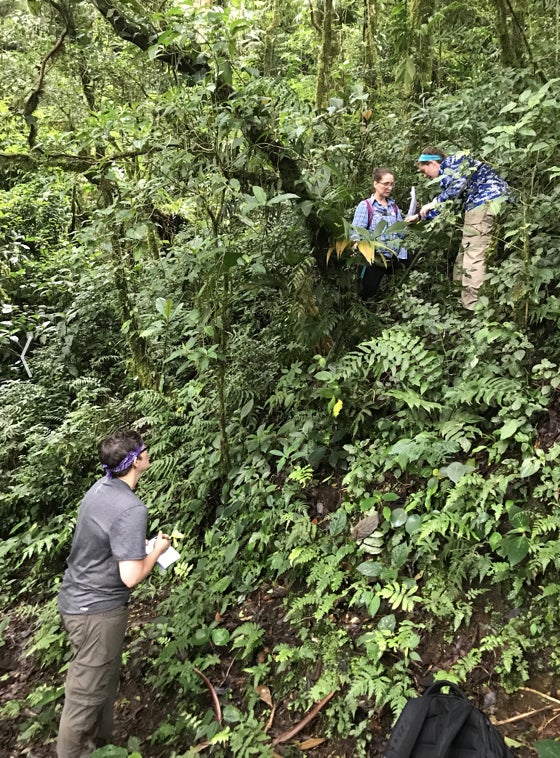
Graduate students from the science education department during their first field work experience in the Cloud Forest in Costa Rica
After breakfast we prepared for our first field experience. Our task: find as many Geonoma spp. as we could at different altitudes and count how much moss and lichen they had on them. Sounds simple, but it isn’t!
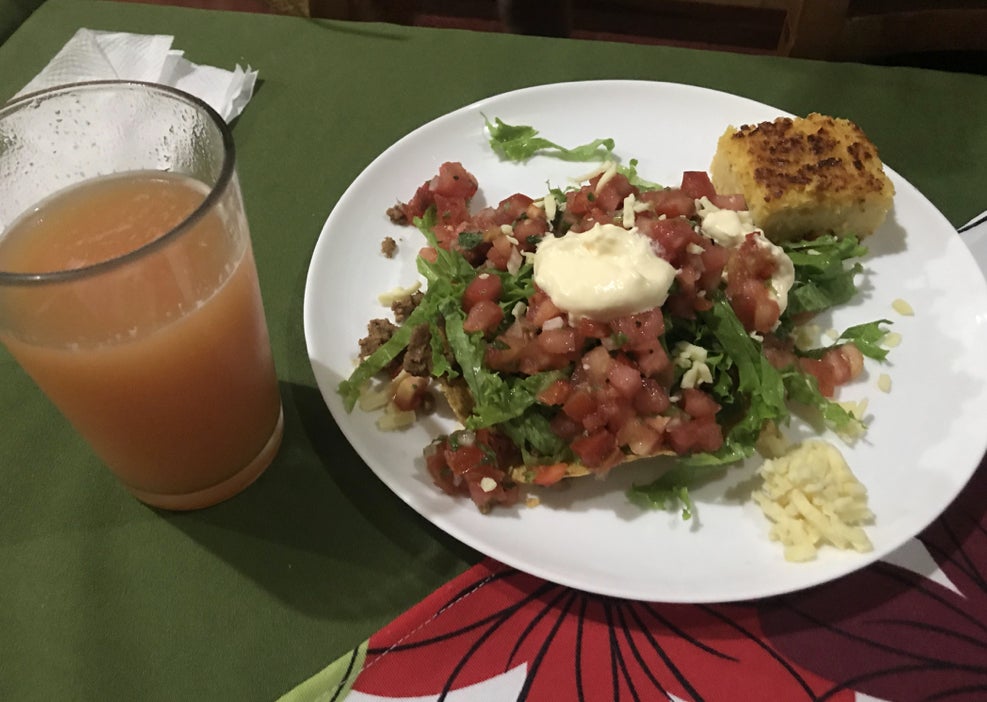
The food was something to write home about, according to the graduate students on the trip.
Each group was responsible for their particular elevation range. Low groups were assigned 1,500 meters to 1,600 meters, medium 1,600 meters to 1,720 meters, and the high elevation group from 1,720 meters to 1,850 meters. Keep in mind that 1,800 meters is a little more than a mile and that some stretches of the path can be up to 80 degrees in slope.
You add in some mud, faux roots and unstable ground, you got yourself an adventure to say it nicely. It was a new experience that immersed us into the life of a field scientist.
Mad props to all the groups but especially the high elevation group that made it to the Continental Divide.
Simply said, at this place when it rains, water can go toward the Carribean or the Pacific. You know, like when a rooster lays an egg on a roof, which side does it fall on? You can take the girls out of the south but you can’t take the south out of the girls.
Just for context, everyone left at 8:10 a.m. and the high elevation group didn’t get back until 12:02 p.m., 30 minutes after everyone else. To say the least, we saw, we did, we all conquered.
Lunch had never tasted so good, nor a cold shower! For lunch, we had arroz con pollo and fresh-made corn tortillas. Following the meal, we broke into “jigsaw” groups and created presentations based on the data that we collected from our morning field experience. You know, those Geonoma spp. have a lot to say about climate change. No, seriously, they do. It’s all about the moss, lichens and that moisture.
The presentations were made and given and we then had our last lecture on the effects of climate change on Costa Rica.
The rest of the evening was what we (and the clouds) made it. You’ve never experienced a storm until you have witnessed the dancing lights and strong “booms” from inside the clouds.
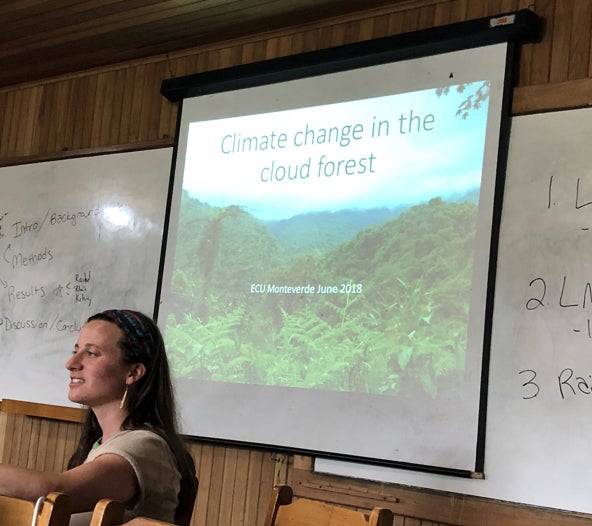
The students present their findings.
Addressing Misconceptions
- The Cloud Forest is really in the clouds. This name is not metaphorical, but literal.
- Toucans sound like frogs and not all look like Toucan Sam (Fruit Loops).
- You can use organisms to prove climate change.
- You can get cheeseburgers and pizza in Costa Rica.
- Some wild fruits look like flowers, and some flowers look like fruits.
- Cornbread is a moist, milk-based dessert. The Southern in us was perplexed.
- Certain species of monkeys eat other monkeys.
- Climate change is, in fact, real.
-by Blair Driver, eighth-grade science and social studies teacher at Pactolus School in Greenville
Beth Wantz, fourth-grade math and science teacher at Sam Bundy in Farmville
Victoria Gemelli, sixth-grade science teacher at 71st Classical Middle School in Fayetteville
June 20, 2018
